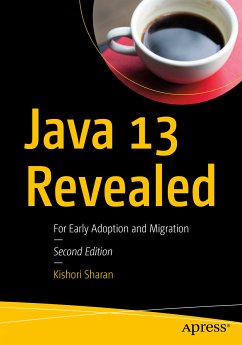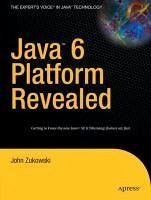
Java 9 Modularity Revealed (eBook, PDF)
Project Jigsaw and Scalable Java Applications

PAYBACK Punkte
14 °P sammeln!
Presents the defining new and much-anticipated feature in Java 9 that all Java programmers will need and want to learn
Covers a feature essential to using Java for connected devices and the Internet of Things
Solves painful and longstanding problems around conflicting class names and class paths that have plagued Java programmers from the beginning
Dieser Download kann aus rechtlichen Gründen nur mit Rechnungsadresse in A, B, BG, CY, CZ, D, DK, EW, E, FIN, F, GR, HR, H, IRL, I, LT, L, LR, M, NL, PL, P, R, S, SLO, SK ausgeliefert werden.












